While it’s often considered a densely populated and light-polluted urban country that’s not ideal for amateur astronomy, England has plenty of hills, open moorland, reservoirs and remote countryside that are perfect for stargazing away from the glow of towns and cities.
There are many International Dark Sky Reserves in England where darkness is protected, including Exmoor National Park, Moore’s Reserve in the South Downs National Park, Cranborne Chase and the newly-certified Yorkshire Dales and North York Moors National Parks.
For more stargazing, read our guides to the best places for stargazing in the UK, stargazing in Scotland, stargazing in Wales and stargazing in Ireland.
If you're just starting out, read our beginner's guide on how to stargaze.

There are also two International Dark Sky Parks celebrated for having the very darkest skies: Bodmin Moor Dark Sky Landscape in Cornwall and Northumberland National Park and Kielder Water & Forest Park.
As well as a mushrooming of areas certified by the International Dark-Sky Association (IDA), England also boasts a variety of Dark Sky Discovery Sites, mostly nominated by local amateur astronomy societies.
Selected for their ease of accessibility, these areas are super-dark, offering incredible views of starry night skies.
We’ve also uncovered 4 English regions that haven’t yet been officially designated as having dark skies, but it’s only a matter of time.
The Cotswolds, the Forest of Dean and the Wye Valley, the Norfolk Coast and the Peak District National Park all richly deserve a visit by anyone looking for starry skies.
So read up on the Countryside Code, check current COVID-19 guidance, don your warm clothing and sensible shoes, and get ready to discover England’s dark side.
9 of the best places to stargaze in England
1
Yorkshire Dales, North York Moors National Parks, Yorkshire
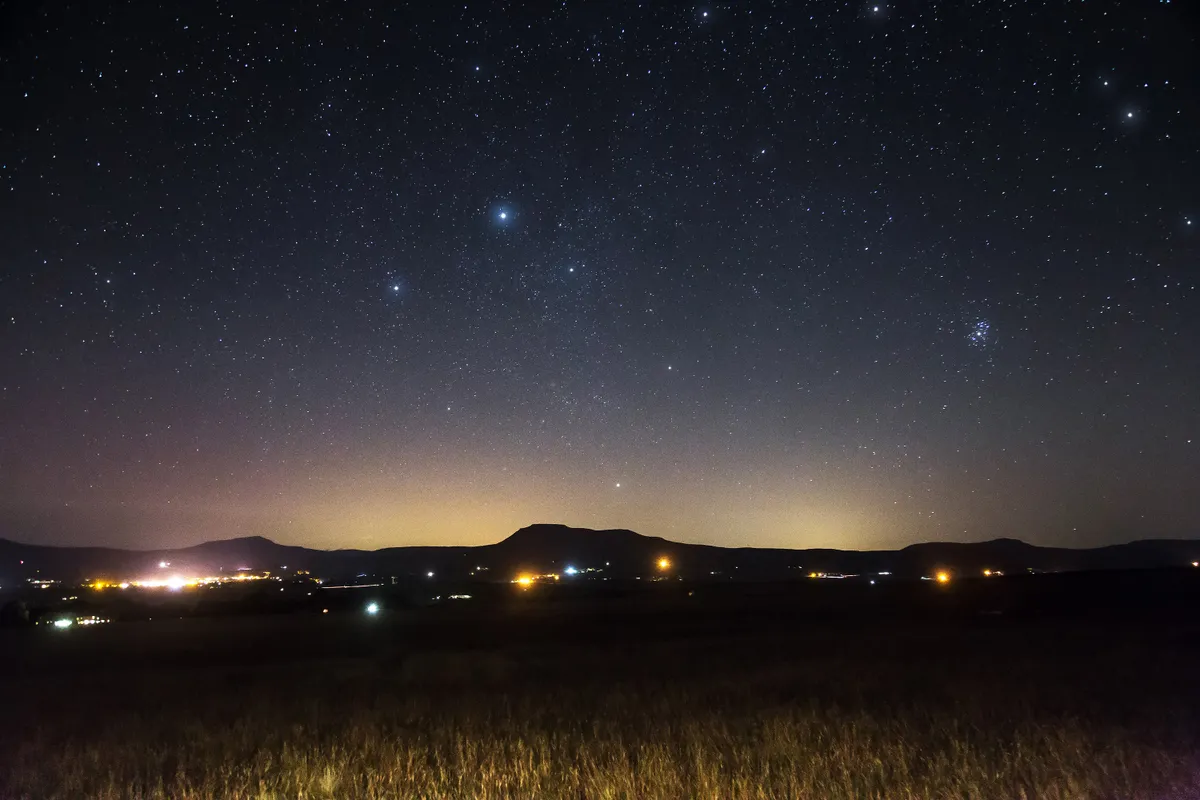
Welcome to the UK’s largest Dark Sky Reserve. Either side of the A1(M) in northern England, the Yorkshire Dales and North York Moors were designated Dark Sky Parks in December 2020, and together their combined area of over 3,500km2 makes them one of the largest spaces with a protected night sky in Europe.
The North York Moors has three Dark Sky Discovery Sites: the Moors National Park Centre at Danby, Sutton Bank and Dalby Forest. Meanwhile, the Yorkshire Dales has seven Dark Sky Discovery Sites, with the original three at Hawes, Malham and Buckden now added to by four new sites within the Nidderdale Area of Outstanding Natural Beauty (AONB) west of Ripon and northwest of Harrogate.
Stargazers in this area of reservoirs, open heather moorland and eye-catching rock formations should head to Scar House, Thruscross Reservoir, Fewston Reservoir and Toft Gate Lime Kiln. A joint Dark Skies Festival is held regularly by both national parks every February.
More info:
North York Moors National Park
2
Norfolk Coast AONB, Norfolk
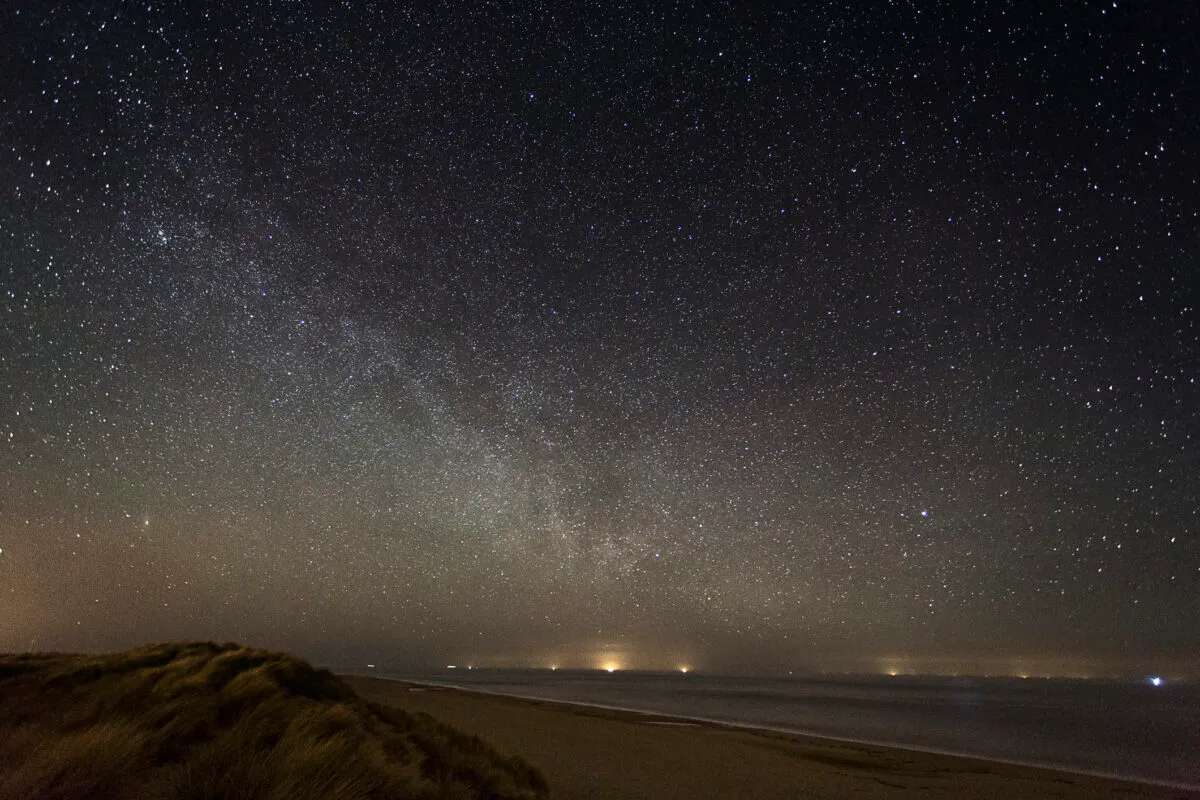
Those after naturally dark landscapes should consider visiting the Norfolk Coast and Norfolk Broads, which together form one of the UK’s darkest places.
A site that’s perhaps best known to amateur astronomers is Kelling Heath Holiday Park near Holt in the Norfolk Coast Area of Outstanding Natural Beauty (AONB), which is the location of a twice-yearly star party.
It’s also one of the area’s four ‘Milky Way-class’ Dark Sky Discovery Sites, meaning you can see the Milky Way in the night sky with the naked eye.
The other three are Wiveton Downs Nature Reserve, RSPB Titchwell Marsh Nature Reserve and nearby Barrow Common near Brancaster.
Local astronomy groups – the North Norfolk Astronomy Society and the Kings Lynn and District Astronomy Society – host stargazing events over the year.
Keep an eye out for the Norfolk Coast Dark Skies Festival too.
More info:
3
Peak District National Park, northern England
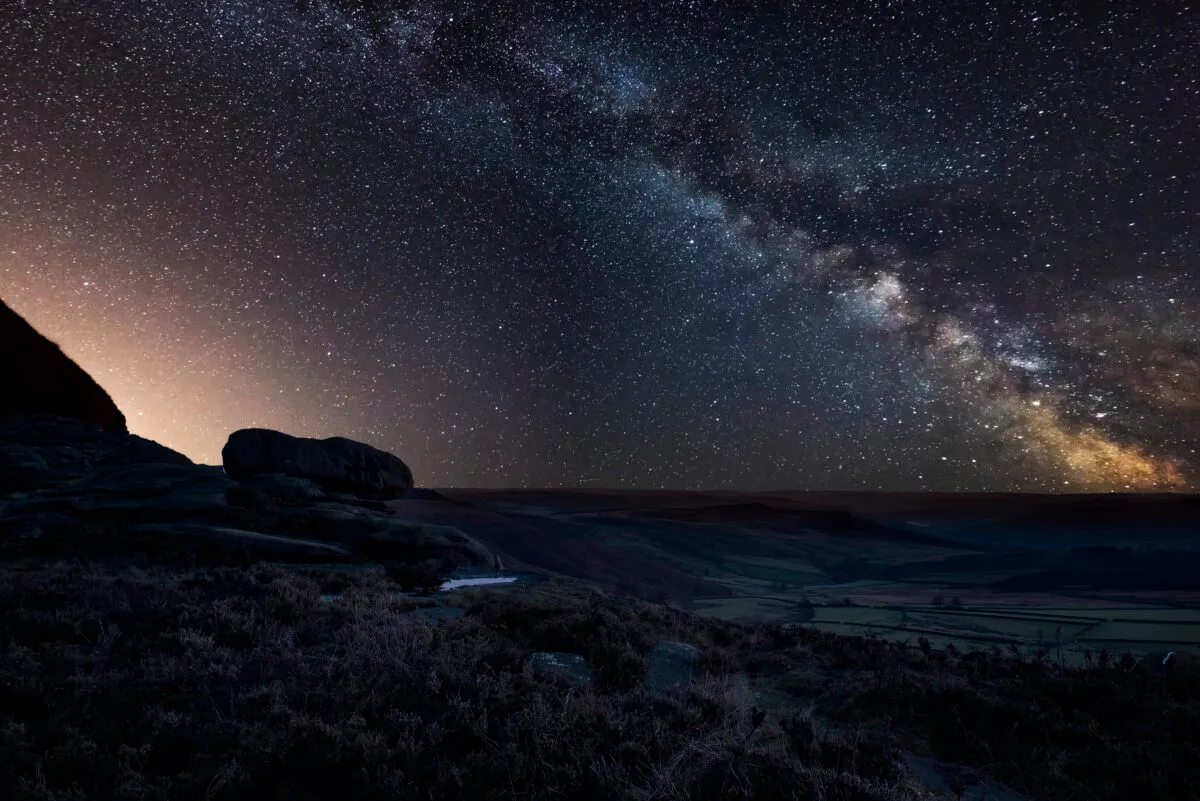
A vast area of upland at the southern end of the Pennines between Manchester and Sheffield, the Peak District is the UK’s original national park.
Together with Nottingham Trent University and the Science and Technology Facilities Council, the park authorities have identified three Dark Sky Discovery Sites ideal for stargazing and kitted them out with interpretation panels that change with the seasons, showing visitors what constellations are visible in the night sky.
Combining dark skies and panoramic views, they include the ‘Milky Way-class’ Surprise View near Hathersage, overlooking the Hope Valley, Parsley Hay car park (SK17 0DG) near Arbor Low stone circle, and Minninglow car park (DE4 2PN).
More info:
4
Cotswolds AONB, Gloucestershire and Oxfordshire

An Area of Outstanding Natural Beauty (AONB) since 1966, the rolling hills and grasslands of the Cotswolds make is one of the best places to go stargazing in south central England.
It’s got two Dark Sky Discovery Sites, both ‘Milky Way class’, at Aunt Phoebe’s Recreation Ground in the village of Long Compton, and at the Rollright Stones ancient monument slightly further south towards Chipping Norton.
The latter is a regular observing venue for the Chipping Norton Amateur Astronomy Group (CNAAG) and easily accessible at night.
To the southwest, the area around the villages of Northleach and Guiting Power offers dark skies that are ideal for seeing the Milky Way, while Cleeve Hill above Cheltenham is a good place for stargazing, despite being close to a town.
More info:
5
Forest of Dean and Wye Valley, Gloucestershire
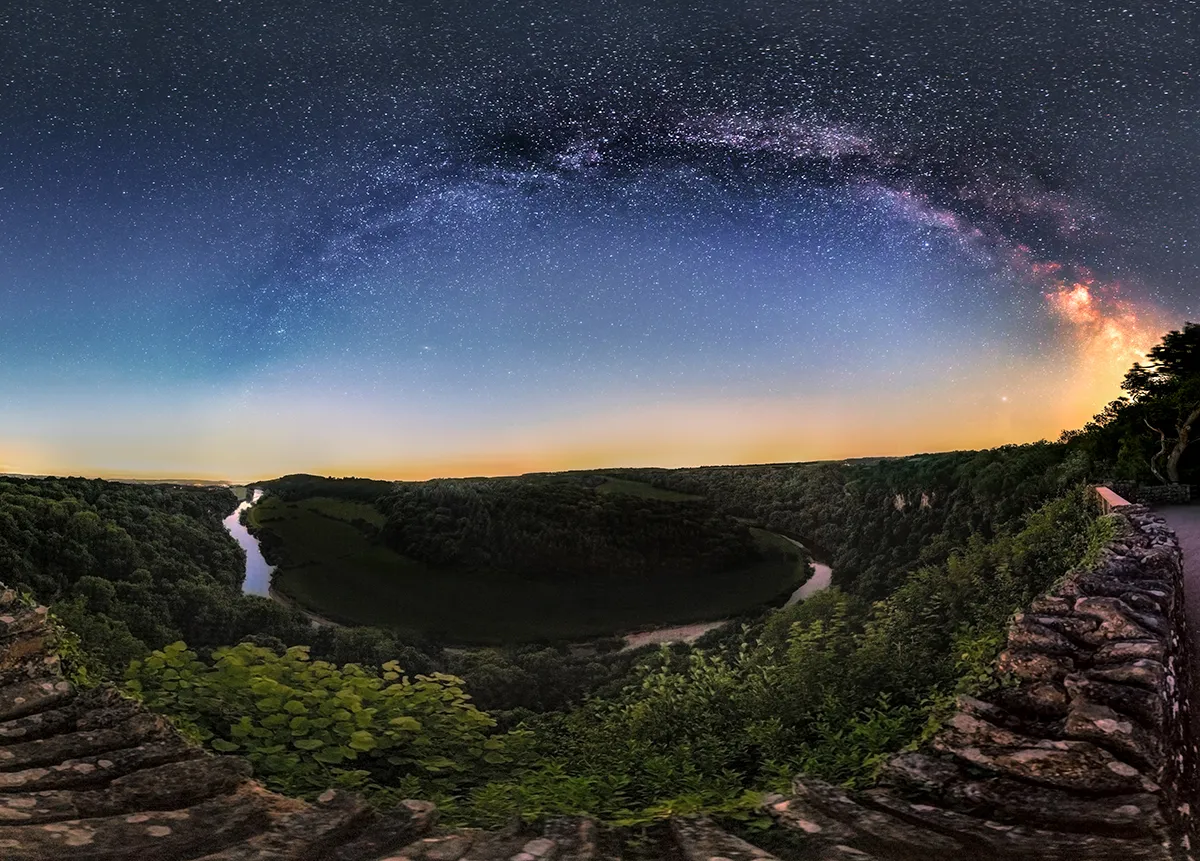
Anywhere away from towns and villages in the Forest of Dean and Wye Valley region will put you under a dark sky. A great place to start is the iconic Symonds Yat Rock viewpoint.
It offers a jaw-dropping panorama over a bend in the River Wye and from March to May it’s possible for astrophotographers to create a panorama with the full arch of the Milky Way spanning over it.
Similarly, Bigsweir Bridge near St Briavels can create a great foreground for long exposure photographs. Other locations stargazers should consider in the area include the wide-open sky of Cannop Ponds, Mallards Pike Lake and Speech House Lake in the Forest of Dean.
Intrepid night-hikers who are after spectacular vistas should consider the Devil’s Pulpit along the Wye Valley Walk for views over Tintern Abbey, and May Hill near Gloucester – one of the highest points in the Forest of Dean – for its 360˚ views.
More info:
6
Exmoor National Park, Somerset and North Devon
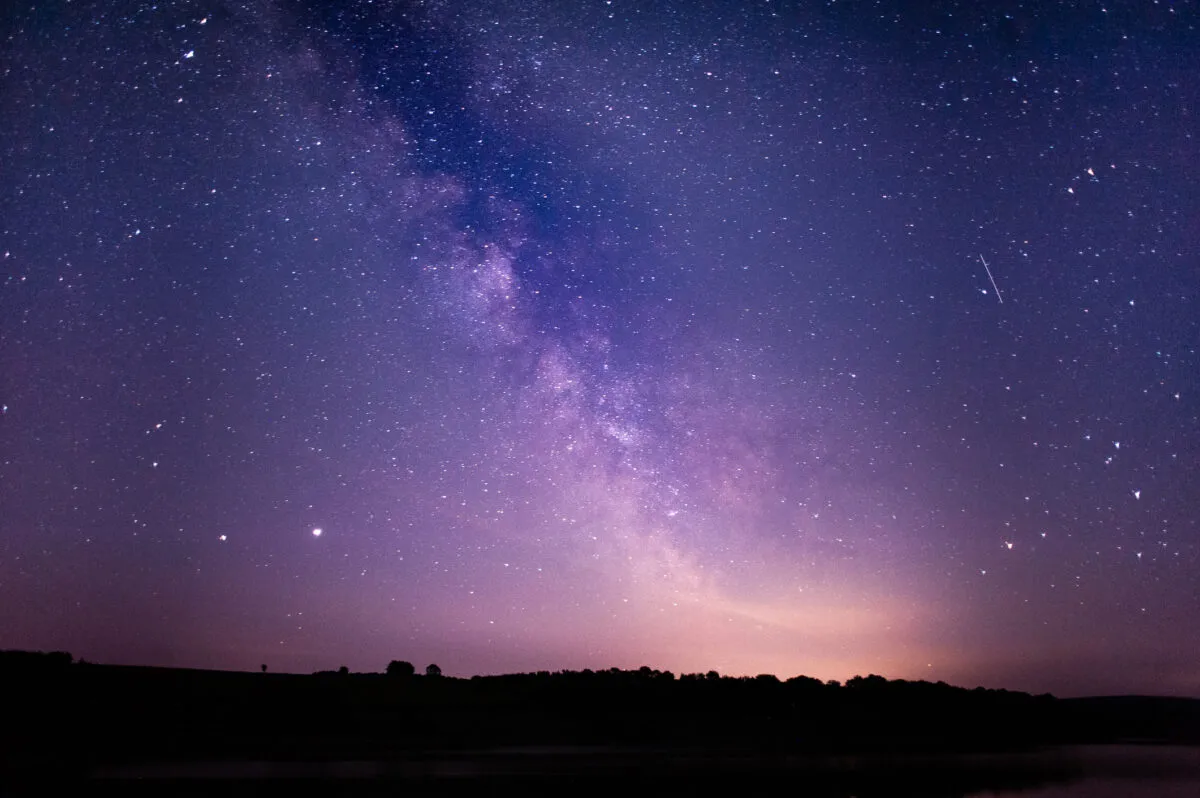
A Dark Sky Reserve, Exmoor National Park has some of the darkest skies in the country.
As a holiday area it’s also got plenty of accommodation, so you can easily visit the area with your family and take in the night sky.
There are lots of iconic and easily accessible places to aim for, including the highest point on Exmoor, Dunkery Beacon.
Also worth a night-time trip is Heddon’s Mouth, a spectacular rocky cove on the coast of North Devon where the River Heddon tips into the ocean.
There’s a car park, a circular walk and accommodation (The Hunter’s Inn pub). Other dark-sky sites include; Holdstone Hill, County Gate, Brendon Two Gates, Webbers Post, Anstey Gate, Haddon Hill and Wimbleball Lake.
Exmoor National Park Authority has just produced a free downloadable Astronomer’s Guide to Exmoor (PDF) booklet – complete with dark-sky meter readings – and it’s developing a Dark Sky Discovery Trail over farmland for 360˚ views. Exmoor Dark Skies Festival takes place every October.
More info:
Exmoor National Park Stargazing
7
Cranborne Chase AONB
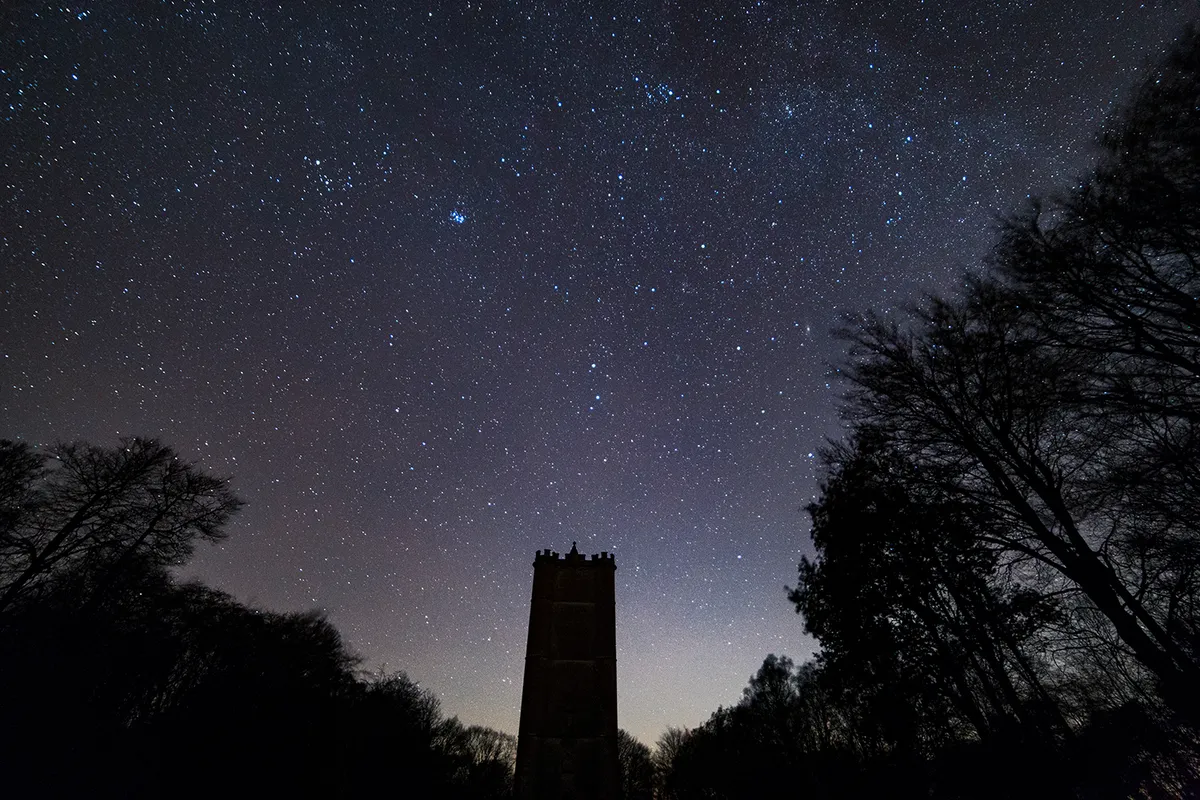
Star-chasing is easy in the Cranborne Chase Area of Outstanding Natural Beauty (AONB) between Warminster, Salisbury and Bournemouth.
A chalk plateau in southern England overlapping the boundaries of Wiltshire, Dorset, Hampshire and Somerset, Cranborne Chase became a Dark Sky Reserve in 2019.
The best places to stargaze in its 980km2 have been selected by Dark Skies advisor Stephen Tonkin.
In the south, close to Bournemouth, is Badbury Rings, an Iron Age hill fort, while nearby is Knowlton’s fabulous Church Henge – the ruins of a medieval church surrounded by prehistoric barrows and stones – which makes for an iconic astrophotography foreground.
nother target for nightscape photographers should be King Alfred’s Tower near Bruton in Somerset, a high folly from 1772, while in the AONB’s dark centre is Win Green, its highest point and a Site of Special Scientific Interest.
More info:
8
Moore’s Reserve, South Downs National Park

Named in honour of the late presenter of The Sky at Night, Sir Patrick Moore, who lived in Selsey, West Sussex, this Dark Sky Reserve is also England’s newest National Park.
An area of chalk downland protected since 2011, the South Downs National Park stretches from St Catherine’s Hill near Winchester, Hampshire in the west to Beachy Head, East Sussex in the east.
An important corridor of darkness just under 100km from London, the darkest cores are in the west of the park with Dark Sky Discovery Sites at Butser Hill, Buriton recreation ground, Harting Down, Iping Common and Bignor Hill.
There are more along the coast including Chidham and West Itchenor near Chichester Harbour, and Birling Gap, near the Seven Sisters chalk cliffs near Seaford.
If the weather isn’t looking good consider a visit to the South Downs Planetarium and Science Centre near Chichester, where Professor John Mason conducts lively tours of the night sky from inside.
Keep an eye out for the South Downs Dark Skies Festival too.
More info:
9
Northumberland National Park
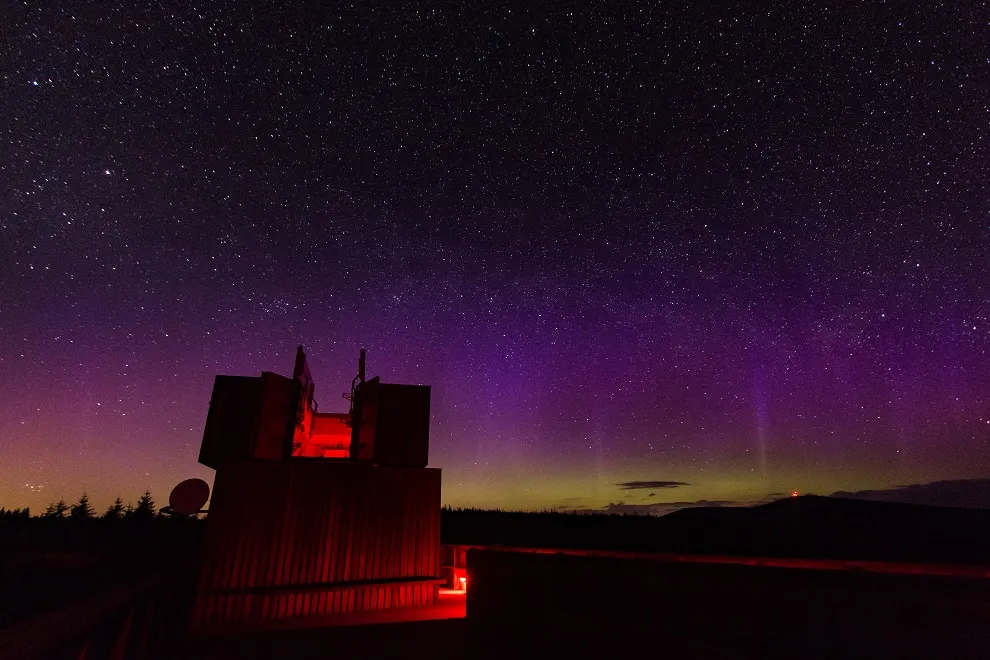
Northumberland is one of the darkest regions in England and a great place for stargazing. And, when you think of stargazing in the north of England, Kielder Observatory is one of the first places that comes to mind.
The observatory team host public astronomy outreach sessions, stargazing events and talks, including beginner's courses for adults and children who want to learn more about observing the night sky.
Northumberland National Park was awarded gold tier status as a Dark Sky Park by the International Dark Sky Association, but it also has plenty of Dark Sky Discovery sites, making it one of the best places for astronomy in Europe.
More info:
What are your favourite places to stargaze in England? Do you know a great place with dark skies that hasn't been formally recognised? Let us know by emailing contactus@skyatnightmagazine.com.
